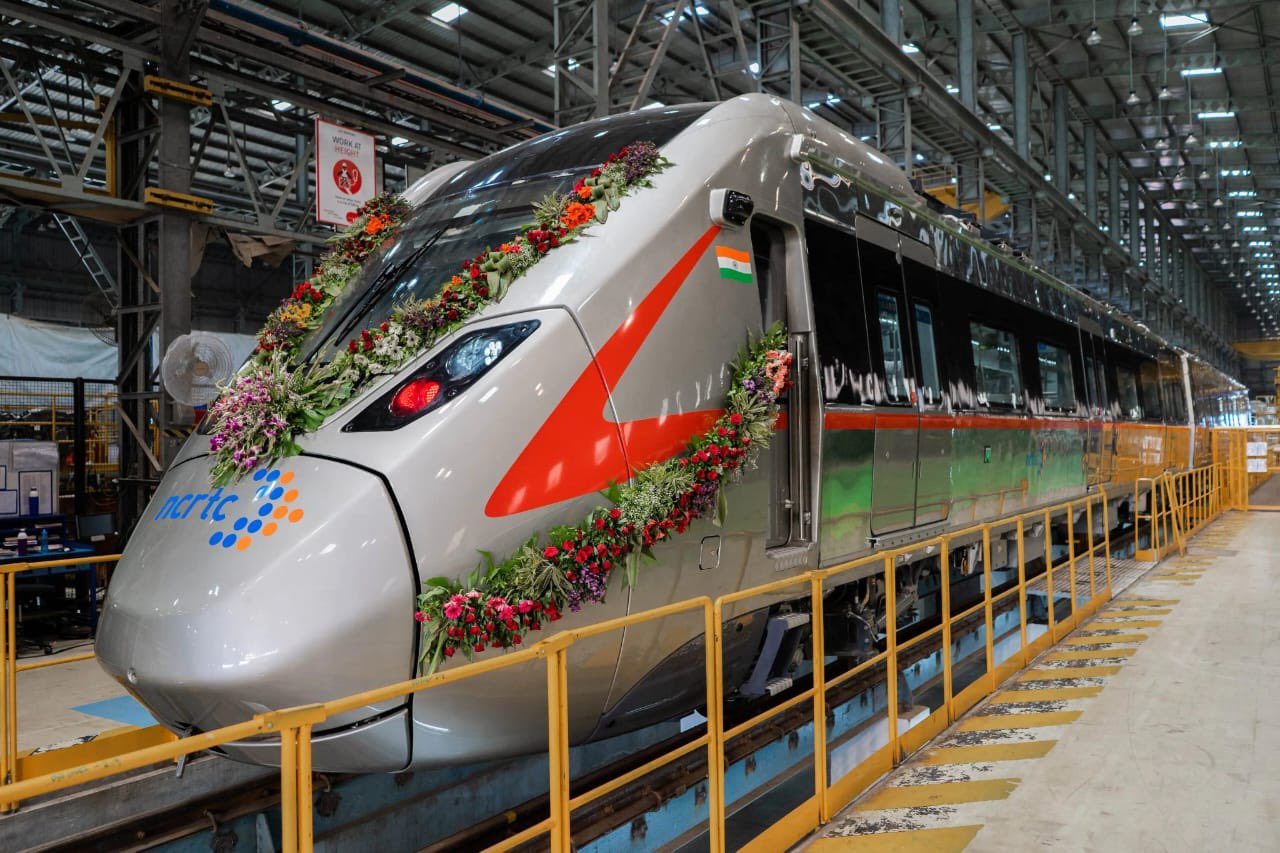Delhi-Ghaziabad-Meerut RRTS: A New Era in Indian Public Transport
Revolutionizing Travel: The Features and Impact of RRTS
Namo Bharat First RRTS Train: In a landmark event poised to reshape India’s commuting landscape, Prime Minister Narendra Modi is all set to inaugurate the first Regional Rapid Transit System (RRTS) train, christened ‘Namo Bharat’, on October 20. This momentous occasion signifies a significant advancement in the domain of efficient, high-speed commuting, particularly for residents traveling between Sahibabad and Duhai Depot in the Delhi-Ghaziabad-Meerut corridor.
Understanding RRTS: A Paradigm Shift in Commuting
The RRTS stands as a testament to India’s commitment to progress in public transport. Unlike conventional railways and metros, RRTS focuses on providing dedicated, high-speed, high-capacity commuter service. It ensures reliable, high-frequency, point-to-point regional travel, catering to passengers covering extended distances with fewer stops and at remarkably higher speeds, thereby revolutionizing the travel experience for countless citizens.
Efficiency Redefined: The Impact on Commute Time
The carefully planned priority section of RRTS guarantees a superior travel experience. Equipped with comfortable seating and efficient air conditioning, it offers respite from the challenges of autorickshaws, buses, or private transport amidst traffic and adverse weather conditions. The operational brilliance of RRTS is evident in its speed, drastically reducing the travel time between Sahibabad and Duhai Depot from the usual 30-35 minutes by road to a mere 12 minutes. This substantial time-saving not only enhances daily commuting but also significantly improves the quality of life for thousands of passengers.
Stations and Connectivity: A Seamless Travel Network
The 17-kilometer priority section boasts five strategically located stations: Sahibabad, Ghaziabad, Guldhar, Duhai, and Duhai Depot. Among these, the Ghaziabad station stands tall as the highest point in the Delhi-Meerut corridor, elevating the travel experience both literally and metaphorically. The integration of RRTS with the existing Delhi Metro network ensures seamless transitions for commuters between different modes of public transport. For instance, the Sahibabad RRTS station is conveniently located a mere 4 km away from the Vaishali Metro Station on the Blue Line, enhancing connectivity and ease of travel for passengers.
Accessibility and Connectivity for All: A Vision Realized
In a commendable move towards inclusivity, the National Capital Region Transport Corporation (NCRTC) has incorporated features such as spacious lifts and designated spaces for wheelchairs and stretchers inside the trains. This commitment ensures accessibility for all passengers, regardless of their mobility challenges, enabling them to benefit from RRTS services. Additionally, the NCRTC’s initiative to invite tenders for mobile coverage solutions within the tunnels connecting underground stations on the RRTS corridor exemplifies a dedication to enhancing connectivity even in subterranean sections of the route.
Looking Ahead: A Future of Enhanced Connectivity
The inauguration of ‘Namo Bharat’ not only represents a significant milestone in the Delhi-Ghaziabad-Meerut corridor but also promises a more connected, accessible, and efficient India. As the 82-kilometer Delhi-Meerut section nears completion, with an estimated cost of Rs 30,000 crore, it stands as a testament to India’s dedication to providing world-class transportation solutions. This development paves the way for a future where efficient public transport is not just a convenience but a fundamental right, fostering progress and prosperity nationwide.
In conclusion, the introduction of the RRTS train, especially under the name ‘Namo Bharat’, embodies India’s strides toward a more efficient, sustainable, and interconnected future. This monumental leap reaffirms the nation’s commitment to providing accessible and advanced transportation, promising a brighter, more accessible tomorrow for all its citizens.







